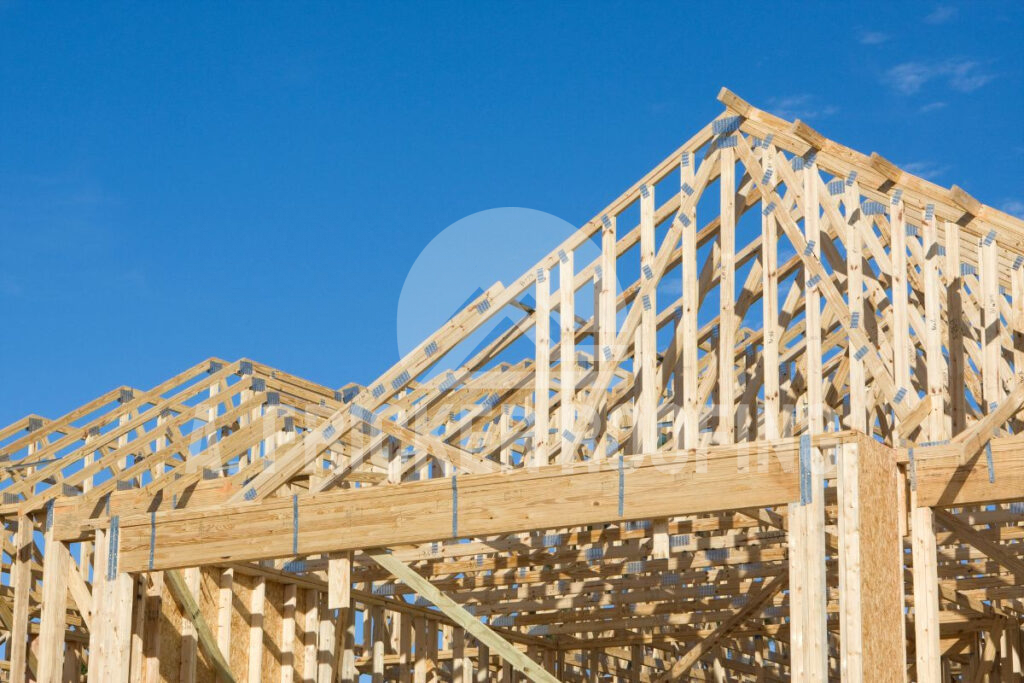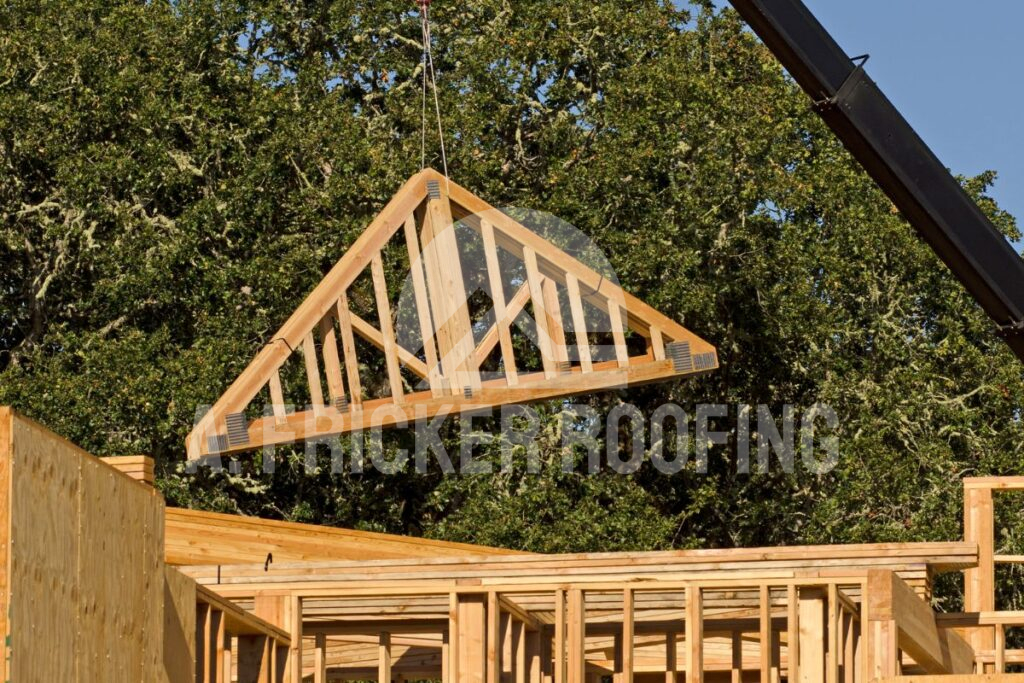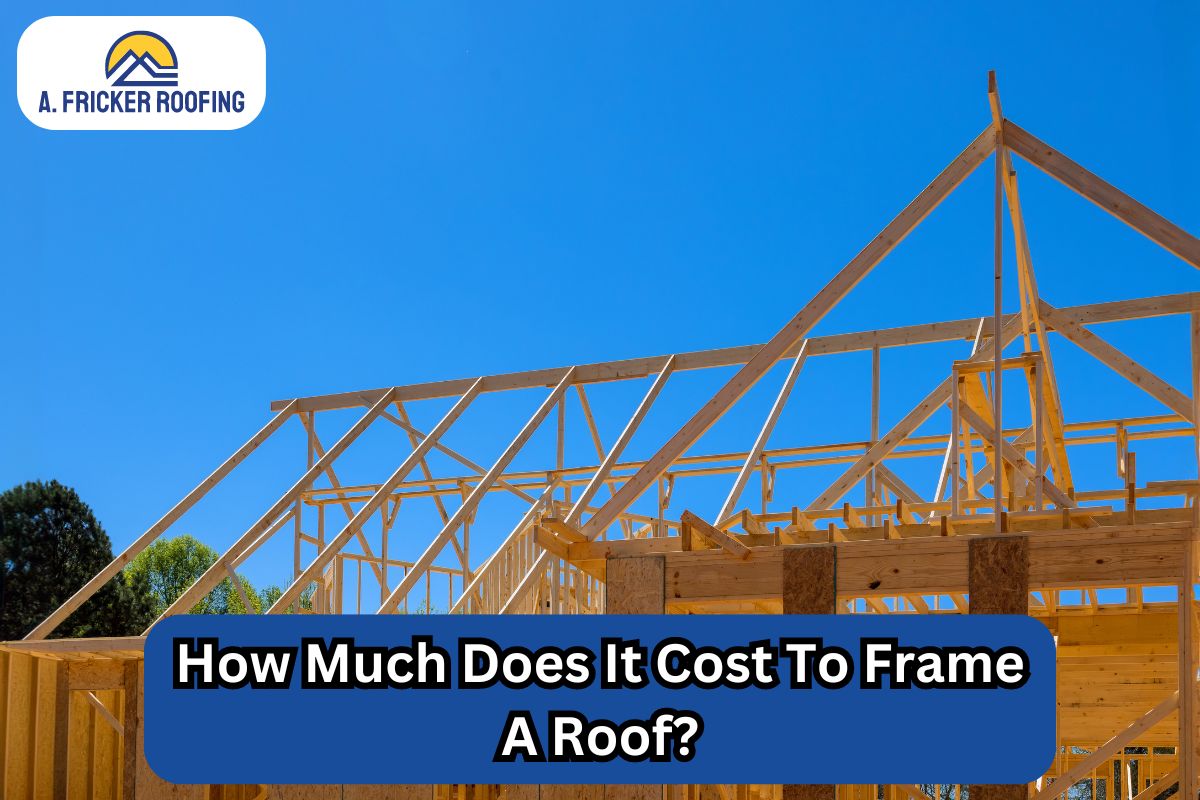For a stable roofing system, not only do you need high-quality roofing materials, but also a strong and durable structure. The framing of your roof plays an important role in defining your roof’s durability.
While most homeowners research the top roofing materials for their new roof installation project, they tend to forget about roof framing.
Today we will talk about framing and answer the question, “How much does it cost to frame a roof?” We will also discuss the major factors that can affect the cost of your new roof.
What Is Roof Framing?

Roof framing is the process of creating the structure that supports your roof. This involves using wood, steel, or other materials to build a framework that holds up the roofing material. The most common types of roof framing include truss systems and traditional stick framing, also known as roof rafters.
Before you move ahead with your project, check out our blog post to get a better understanding of roof framing and why it’s important: Why and When You Need To Replace Roof Framing
Types Of Roof Framing and How Much They Cost
Truss Systems:

These are pre-fabricated frame structures that are designed and built off-site before being transported to your location for installation. Truss systems are highly efficient and cost-effective due to their streamlined production process. They are often quicker to install than traditional methods, making them a popular choice for many homeowners looking to save on labor costs. On average, truss systems cost between $5 and $14 per square foot.
There are two common materials used to manufacture trusses. One is wood, the first choice of the majority of homeowners. There are specific types of wood trusses, each for a specific type of roof. Some of the most common include:
- Gable Truss
- Attic Truss
- Fink Truss
- Mono Truss
On the other hand, metal trusses are also gaining popularity. Metal trusses, though very durable and dependable, cost much more than traditional wood trusses.
Stick Framing:
This method involves cutting and assembling the roof frame directly on-site, allowing for more customization and flexibility in the design. It includes rafters, which are the inclined structural members that support the roof decking and cover. Stick framing often requires more time and skilled labor, which can lead to higher overall costs, but it provides the ability to tailor the roof structure to specific architectural needs.
The cost of rafters depends on their length and the type of wood used. Longer rafters not only require more wood but also additional support structures. Premium wood, such as cedar or redwood, can significantly increase costs compared to standard pine rafters. In general, you can expect to pay between $7 and $30 per square foot for roof rafters.
Other Factors Affecting The Cost
Roof Size
The size of your roof plays a significant role in determining the overall cost of framing. Roofs are typically measured in square feet, and the larger the roof, the more materials and labor will be required to complete the project. For example, a medium-sized home with a roof area of around 1,500 square feet might cost between $9,000 and $22,000 to frame, assuming an average framing cost of $7 to $12 per square foot. Conversely, a larger home with a roof area of 3,000 square feet could see framing costs ranging from $18,000 to $45,000.
Roof Complexity
The complexity of the roof design is another critical factor that affects framing costs. Simple, straightforward roof designs, like gable or shed roofs, typically require less time and fewer materials to frame, leading to lower costs. In contrast, more complex roof structures, such as those with multiple angles, dormers, or intricate shapes, demand more labor and expertise. Complex roofs might require custom rafters and additional structural support, which can increase both material and labor expenses.
Labor Costs
Labor costs are a crucial component of roof framing expenses, often varying widely based on location and contractor experience. For example, trusses are easier to install and replace than rafters so labor costs will be lower.
Another point to consider is the quality of work, skilled carpenters might charge premium rates for their expertise. Choosing an experienced contractor ensures quality but may increase overall costs.
Permits and Inspections
Obtaining necessary permits and scheduling inspections can add to your roof framing costs. Local building codes often require permits to ensure safety and compliance, with fees varying by region. Inspections might also be needed at various stages of the project, each potentially incurring additional costs. Budgeting for these requirements is essential to avoid unexpected expenses.
Time of Year
The timing of your roof framing project can influence costs, with construction often cheaper during the off-season. In colder months or periods of low demand, contractors may offer discounts or more competitive rates. Planning your project strategically to coincide with these times can lead to substantial savings, making it a cost-effective choice for homeowners.
Location
The geographic location of your home can significantly impact the cost of roof framing. In areas with higher demand, such as larger cities, material and labor costs are often elevated. Conversely, in regions with lower demand, you might find more competitive pricing, potentially leading to savings on your project.
Tips for Saving on Roof Framing Costs
As we have seen, framing a roof can involve a significant amount of money. It’s important to set a realistic budget for this project, but there are options that can reduce this burden.
Here are some tips to help you save money on your roofing project.
Get Multiple Quotes:
Always obtain multiple quotes from different roofing contractors to compare prices and services. This will help you identify competitive pricing and choose a contractor with the best value.
Plan Ahead:
Scheduling your project during the off-season can lead to lower costs as contractors are often more available and may even offer discounts.
Consider Material Alternatives:
Sometimes, opting for less expensive materials without compromising quality can reduce costs. Discuss material options with your contractor to find the best balance of cost and durability.
Bundle Services:
If you’re doing other construction work, bundling services with the same contractor may lead to discounts.
Roofing Services You Can Trust
Whether you’re building a new home or renovating an existing one, investing in a well-framed roof will provide safety and durability for years to come.
If your roof is in need of repair or full replacement, our team at A. Fricker Roofing and Waterproofing can help. We have a premier team of roofing contractors with years of experience.
Contact us today at (918) 402-7167.
FAQ’s
A. When it comes to your roof, there are two options: DIY or hire a professional. If you have construction experience, consider doing some of the preliminary work yourself. However, be aware that roof framing is complex and best handled by professionals. The weight of your whole roof depends on the framing, so it’s better to hire a roofing contractor for this job.

